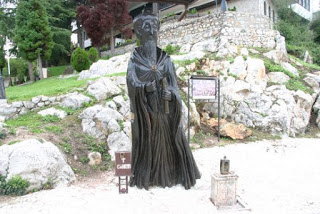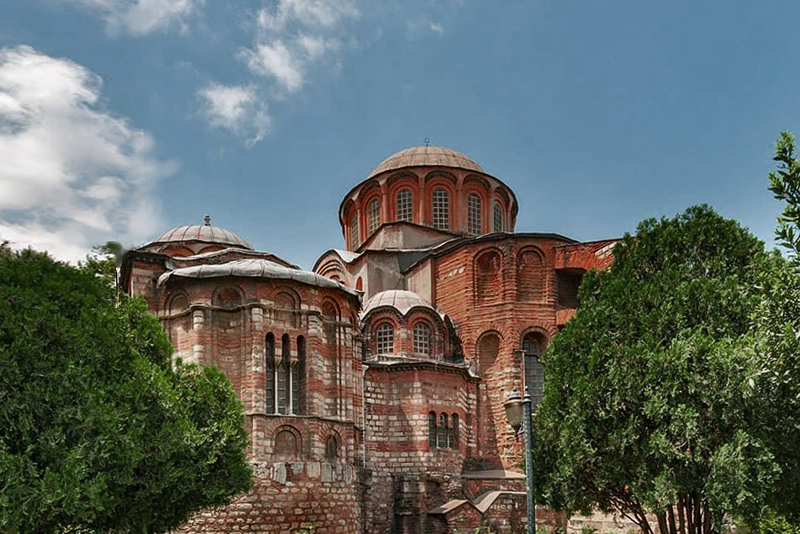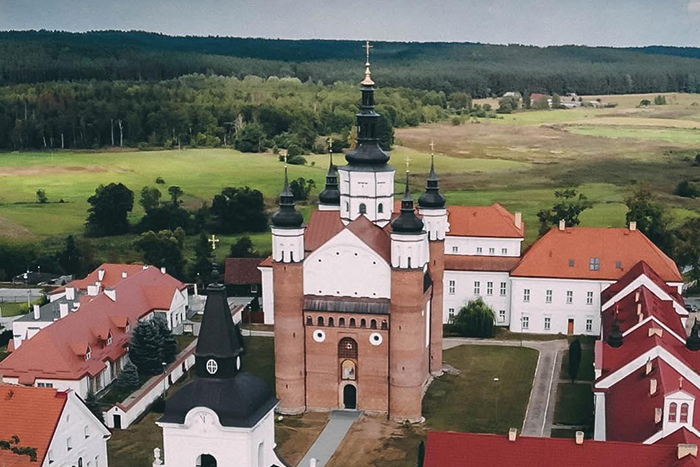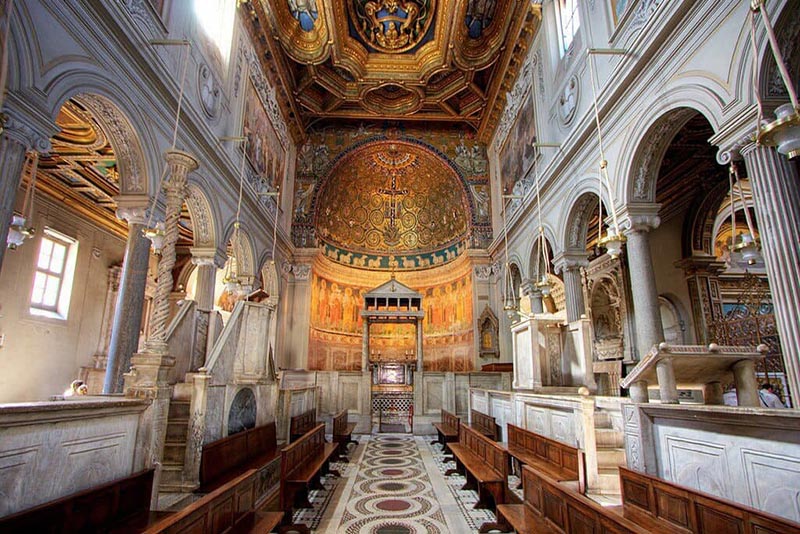
The innumerable beautiful ancient icons that have flooded the west since the first World War, and the increasing interest in them by artists, scholars and ordinary lovers of the beautiful has been one of the bright phenomena of the past two generations. An enormous literature has developed around the icon, both scholarly and popular, and centers for the reproduction of old icons, and the painting of new ones has become especially widespread since the Second World War.

For a great many people the Icon is the supreme symbol of the Orthodox Church. This has been especially true on the popular level since the western world was flooded by Russian émigrés and religious artifacts following World War I. Shortly thereafter the revival in Byzantine studies gained impetus and icons were studied on a serious level while the antique shops offered examples of everything from rare ancient specimens to the great liquid-eyed 19th century romantic western imitations that in the eighteenth century had supplanted the traditional types in the Orthodox lands.
For many westerners, and in the Orthodox folklore, icons are the Eastern substitute for statues commonly, and erroneously, believed to the forbidden in the Orthodox Church. Actually, statues are by no means forbidden in Orthodoxy and were always a regular part of the decorative and devotional furnishing of the sacred space, the church interior.
Icon, now commonly used as a technical term for the flat, perspective less devotional pictures of oriental Orthodoxy is simply the Greek word for “image.” The Ecumenical Counciliar dogmatic decrees on icons refer, in fact, to all religious images including three-dimensional statues.

Professor Sergios Verkhovskoi, the conservative professor of dogmatics at St. Vladimir’s Seminary forthrightly condemns as heretical anyone who declares statues as unOrthodox or in any way canonically inferior to paintings. (By the 19th Century the traditional flat paintings, derived from Hellenistic Egyptian funerary portraits, and currently claimed to be “authentic” icons had been supplanted throughout the Orthodox Church by western naturalistic painting, more or less skilled.)
How, then, did the common opinion arise that statues were “western,” “heterodox,” “heretical”? The answer is quite simple and derived from sound cultural and sociological foundations.

Statues were common in Byzantium. Our title picture illustrates an ivory, three-dimensional statuette, of the Virgin and Child, “Hodegetria,” from 10th Century Constantinople. Now in the Victoria and Albert museum, it differs from similar examples in Hamburg and New York, in that it was not cut out of an ivory tablet. The back is as carefully and skillfully
carved as the front.
carved as the front.
Constantinople was filled with statues, both within and outside of the churches. One author claims that over three hundred classical statues adorned the plaza before Sancta Sophia. The famous Spanish Madonna, Our Lady of Montserrat, is a Byzantine statue as are many ancient examples in southern France, but it was in Russia that Orthodox Christian freedom in the use of images survived. Let us consider the reasons why statues became unpopular in Orthodoxy.

The main cause, of course, is Iconoclasm (image breaking). As early as the art in the Roman catacombs Christians used sacred images, both for instruction and, evidently, as a means of venerating the person or event depicted. Most of these are paintings, but at least two statues of the Good Shepherd are anterior to Constantine and the Veneration of the Cross is so ancient no initial date can be fixed for it. By 576 we have evidence, in the west, that an image of St. Martin was honored by a lamp constantly burning before it and that Fortunatus had been cured of an ailment by oil taken from it.

By the beginning of the 8th Century the Jews, basing their stand on the Old Testament proscription of images, the Paulician heretics (a branch of the Manicheans, a sect that despised “matter’ as inferior to “spirit.”), and the Monophysites all opposed images. These latter were heretics who declared that Jesus was God and hence His human nature was swallowed up by His divinity and so his unimportant humanity should not be depicted. Furthermore in some areas: Syria, Egypt and among the Germanic tribes, there was a basic distrust of the Greek esteem for human beauty, especially as manifested in art.
All of these influences seem to have proven congenial to the Emperor Leo the Isaurian who in 726 issued his first edict for the destruction of images. There was popular opposition, the Roman bishops protested, and St. John of Damascus summarized the testimony of the Fathers in the three famous essays. Leo died in 740 and was succeeded by his son Constantine V, Copronymus, who pursued his father’s program with barbaric vigor. When he died in 780 his wife, Irene, began the work of restoration and seven years later convoked the Seventh Ecumenical Council in Nicaea which fully restored the veneration of images. After a subsequent period of persecution (the Iconoclastic movement survived in some strength from 726 to 842) the restoration of images was fixed in 842.

The anti-image influence in Constantinople came from Syrians and Armenians, tinctured by Monophysitism, in the west it came from the Emperor Charlemagne and persisted in the Frankish lands until the ninth century, although Rome and Italy adopted the Orthodox position from the first. It is evident from this survey that racial-cultural heritages were highly influential.

The same may be said of the practical disappearance of statues as opposed to icons over large areas of the Orthodox Church. The lingering memory of the Iconoclasts encouraged reticence and the Moslem conquest froze Orthodox art in its most limited form. In the conquered areas the Church was driven indoors, bells were proscribed, and the externals of Christian worship were forbidden in public. While all representations of creatures were banned for Moslem, and pressure put on Christians to conform as much as possible the icon survived while the statue could not. Only in Russia was the Church free enough to maintain its full aesthetic devotional tradition.
Northern Russian woodcarving was highly developed before the coming of the Orthodox missionaries and it survived and was “baptized” into the service of the Church. All images, statues and icons, were carefully watched by ecclesiastical authority as in a ukase of the Holy Synod on March 15, 1722. From the Revolution of 1918 until after World War II statues of historical value suffered the destruction directed at all religious monuments, but currently concern for the achievements of the Russian past has focused money, attention and research on all ancient art and Orthodox statues are especially valued.
 |
| The statue of the Most Holy Theotokos, The Holy Mountains Lavra (Ukraine) |
Hundreds of examples of these devotional objects were destroyed in the first phase of the Revolutionary anti-religious campaign. Yet many statues and three-dimensional crucifixes are plentiful and still in use.
The 1920’s discovered the Orthodox painted icon, the 1970’s the Orthodox statues.
It appears the sometimes heated “two dimensional vs. three dimensional image” argument could be another example of culture intruding upon the faith.





“Professor Sergios Verkhovskoi, the conservative professor of dogmatics at St. Vladimir’s Seminary forthrightly condemns as heretical anyone who declares statues as unOrthodox or in any way canonically inferior to paintings.” And he is the know all and end all of what is heretical? A professor of a liberal seminary? Statues were made, that does not make them correct. People do all sorts of things that are not correct Liturgically and Spiritually, does not make it correct. Statues are a Western innovation and icons were written windows to heaven, not sculpted pieces of art.
Mariam Visagio, the holy Fathers of the Seventh Ecumenical Council explicitly defended effigies. In popular memory, the Seventh Ecumenical Council is known as the “defense of Icons”, because (I’d wager) Icons were all that were left after the iconoclasts.
From H.R. Percival’s book, “The Seven Ecumenical Councils” (1899), pp. 540-541:
“At the close of the [IV] Session [of the Seventh Ecumenical Council], after a number of anathematisms had been pronounced the following was read, to which all bishops subscribed”:
” . . . These honourable images and venerable images, as has been said, we honour and salute and reverently venerate: to wit, the image of the incarnation of our great God and Saviour Jesus Christ, and that of our spotless Lady the all-holy Mother of God, from whom he pleased to take flesh, and to save and deliver us from all impious idolatry; also the images of the holy incorporeal Angels, who as men appeared to the just.
***Likewise also the figures and effigies of the God-speaking Prophets, and of the struggling Martyrs and of holy men.***
So that through their representations we may be able to be led back in memory and recollection to the prototype, and have a share in the holiness of some of them.”
We recently wrote an informative article about Statues and Monuments as Seen from a Christian Perspective, suggest you to read it
https://catalog.obitel-minsk.com/blog/2022/03/statues-and-monuments-as-seen-from-a-christian-perspective
The above quote by Miriam Visagio is confusing: Is Professor Sergios Verkhovskoi approving of statues or are you teasing us and Professor Sergios is mistaken?